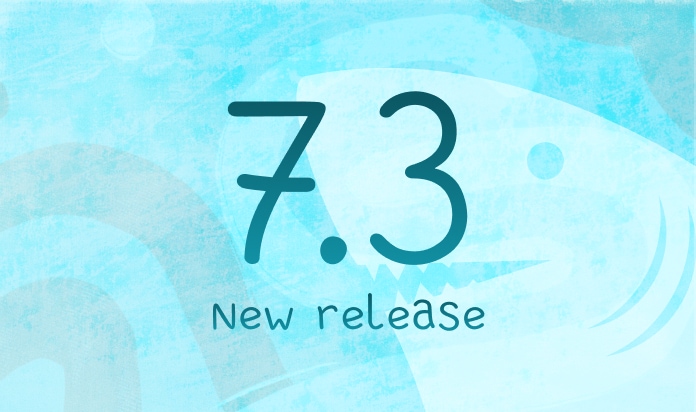Data Breach 101: A Beginner's Guide


What is a Data Breach?
Simply put, a data breach is any unauthorized access to or disclosure of sensitive information. This can include anything from names and addresses to financial details, medical records, and even social security numbers.
How Do Data Breaches Happen?
Data breaches can occur through a variety of means, including:
- Cyberattacks: Hackers use sophisticated techniques, such as phishing, malware, and ransomware to gain access to systems and steal data.
- Insider threats: Employees with malicious intent or accidental human error can lead to data leaks.
- Third-party vulnerabilities: Data breaches can happen when a company relies on third-party vendors with inadequate security measures.
- Physical breaches: Loss or theft of devices containing sensitive information can expose data to unauthorized access.
- Unsecured databases: Sometimes, databases are left unprotected or misconfigured on the internet, allowing anyone to access them without authentication.
- Social engineering: Beyond phishing, attackers might use pretexting or baiting to trick individuals into revealing sensitive information or granting access.
The Consequences of a Data Breach
The consequences of a data breach can be severe:
- Financial loss: Companies may face hefty fines, legal costs, and revenue loss due to customer churn and damage to their reputation. In 2017, Equifax faced billions of dollars in fines and legal settlements following their breach.
- Reputational damage: A data breach can severely damage a company's brand image and erode customer trust. After the 2013 breach, Target faced significant public backlash and declining consumer confidence.
- Legal and regulatory penalties: Companies may face legal action and hefty fines from regulatory bodies. Facebook has faced numerous fines and investigations related to data privacy violations.
- Identity theft and fraud: Individuals whose data is compromised may become victims of identity theft, financial fraud, and other crimes. In 2013 and 2014, the Yahoo breaches enabled criminals to access user accounts for other services, leading to account takeovers and further fraudulent activities.
- Operational disruption: For businesses, a data breach can lead to operational downtime, especially if systems are locked down during an investigation or recovery process.
- Psychological impact: Individuals can experience stress, anxiety, or a sense of violation when their data is compromised, impacting their mental health.
The Evolving Landscape of AI-Powered Cyberattacks
The cyber threat landscape is rapidly evolving, driven by the increasing sophistication of Artificial Intelligence (AI) and Generative AI (GenAI). These technologies are being weaponized by cybercriminals, enabling them to automate attacks, personalize phishing campaigns, and evade traditional security measures.
One of the most significant trends is the dramatic rise in phishing attacks. Attackers are employing increasingly sophisticated techniques, such as QR code phishing (Quishing) and the distribution of malware through compromised Office files. Furthermore, the personalization of phishing emails, using stolen data to tailor messages to individual recipients, has significantly increased their success rates.
Supply chain attacks have also become more prevalent, targeting less secure elements within the supply chain to compromise larger organizations. By infiltrating software suppliers or third-party service providers, attackers can gain access to numerous organizations through a single vulnerability.
Ransomware attacks continue to evolve, with attackers moving beyond simple encryption to include data theft and extortion. The threat of public data leaks has significantly increased the pressure on victims to pay ransom. Moreover, the emergence of double extortion, where data is encrypted and stolen, has further amplified the financial impact of these attacks.
Credential theft remains a significant concern, with attackers increasingly utilizing stolen credentials to gain unauthorized access to systems. Techniques like adversary-in-the-middle attacks are being employed to bypass multi-factor authentication, highlighting the growing focus on exploiting human vulnerabilities.
The Internet of Things (IoT): continues to be a prime target for attackers, with a notable increase in IoT malware. The interconnected nature of IoT devices provides pathways for attackers to move laterally within networks, expanding their attack surface.
Living Off the Land (LOTL): methods use existing software and tools within the target environment, making them more difficult to detect and respond to using traditional security measures.
How to Protect Yourself and Your Business
While companies have a responsibility to protect their customers' data, individuals can also take steps to minimize their risk:
- Strong passwords: Use unique, complex passwords for all online accounts and enable two-factor authentication whenever possible.
- Phishing awareness: Be cautious of suspicious emails, links, and attachments.
- Software updates: Keep your operating systems, browsers, and applications updated with the latest security patches.
- Credit monitoring: Regularly check your credit reports for any suspicious activity.
- Use of VPNs: Virtual Private Networks can add a layer of security, especially when using public Wi-Fi, by encrypting your internet connection.
- Data encryption: Encrypting personal data, both at rest and in transit, can prevent unauthorized access if data is stolen.
- Privacy settings: Regularly review and adjust privacy settings on social media and other online services to limit the exposure of personal information.
- Regular backups: Encourage regular backups of personal data to recover without paying ransom in case of an attack.
- Incident response plan: For businesses, having an incident response plan can mitigate the impact of a breach by ensuring swift and organized action.
Conclusion
Data breaches are a significant threat in today's interconnected world. By understanding the risks and taking proactive steps to protect yourself, you can minimize the potential impact of a data breach on your life. To gain a deeper understanding of these threats, it's crucial to stay informed about the latest cybersecurity threats and best practices. The cyber threat landscape is constantly evolving, with AI and Generative AI (GenAI) playing an increasingly crucial role in the arsenal of cybercriminals. Organizations must adapt their security strategies to address these emerging threats. This includes implementing robust multi-factor authentication, enhancing employee security awareness training, and adopting advanced threat detection and response technologies.
See also



